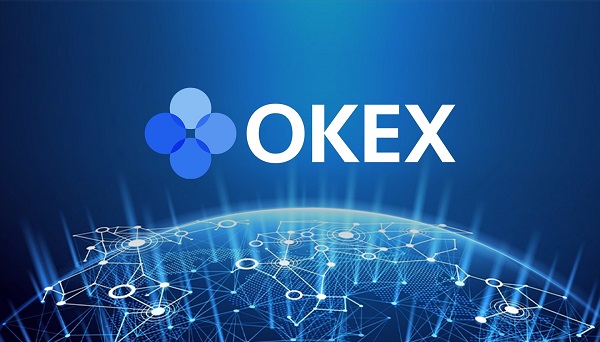
The rise in real-world asset (RWA) tokenization and the influx of institutional interest in cryptocurrencies will speed up, propelled by five crucial sectors exhibiting the most vigorous growth potential. Each of these trends will have substantial ramifications for the future of finance.
Tokenization enhances market liquidity
The extensive effects of tokenizing conventional real-world assets (RWAs) will become evident in 2025, significantly enhancing liquidity and expanding market accessibility, leading to a transformation in our perceptions of asset ownership and trading. Tokenization will improve traditionally illiquid assets through fractional ownership and round-the-clock trading on blockchain platforms, granting smaller entities access to assets previously available only to institutional players.
The market for tokenized assets is anticipated to reach $5 trillion, rising from about $310 billion in 2022, with real estate accounting for $1.4 trillion and bonds $1 trillion. Fractional ownership could draw in 20%–30% more retail investors, while over 80% of institutional investors are likely to embrace tokenization. The liquidity premium for illiquid assets might attain 5%–20%, with real estate observing up to 60% improvement in liquidity compared to traditional investments. The US, EU, and Asia will lead in the adoption of tokenization, representing over 85% of the market. As a clear indication of market maturation, the number of tokenized securities listed on blockchain-based platforms is expected to increase by 200%.
As the market for tokenized assets grows, the regulatory framework surrounding these innovations is adapting accordingly.
Significant regulatory changes reshape the field
The regulatory landscape isn’t stagnant – on the contrary. Global regulatory frameworks will foster greater clarity for digital securities in 2025, marking an essential evolution in how these assets are regulated and traded. This progress comes at a crucial juncture, as the industry has long sought clearer directives for operational compliance.
New standardized regulations will facilitate cross-border trading and minimize legal uncertainties, while compliance tools that incorporate blockchain analytics will enhance adherence to regulations. These are significant shifts that will open new avenues for market participants.
The effects are already becoming apparent: markets adhering to frameworks like MiFID, MiCAR, and DLT in the EU could witness a 30%–40% increase in institutional engagement. Indeed, over 80% of jurisdictions worldwide are expected to implement clear regulations for digital assets, an increase from 50% in 2023.
To support this regulatory evolution, the number of regulated tokens is projected to grow 50% per year, with compliance software reaching $6 billion by 2025.
With clearer regulations providing a stable base, traditional financial institutions are increasingly acknowledging the potential of tokenized assets.
Growth of institutional involvement drives maturity
In the upcoming year, the sector is likely to observe a surge in institutional investments fueled by enhanced infrastructure, custody solutions, and risk management tools. As larger entities enter the market, it fundamentally reinforces the ecosystem. Among the primary drivers for institutions to increase their presence in secondary markets are improved custody solutions and shorter settlement times made possible by blockchain infrastructure.
To meet the sophisticated demands of institutional investors, risk management tools, including smart contract audits and automated compliance systems, will tackle operational and regulatory risks, while specialized custodians connect traditional finance and blockchain trading.
Institutional trading in digital assets, including stablecoins, is anticipated to rise from 35% of the total market volume in 2023 to 50% in 2025, contributing $5–$6 trillion annually. Institutions are expected to account for more than 70% of liquidity in secondary markets for tokenized securities, supported by advanced blockchain infrastructure and reduced settlement durations. Concurrently, real-time settlement enabled by blockchain could save institutions $10 billion annually by eliminating conventional clearing procedures.
In the custody sector, leading providers such as Fireblocks, Anchorage, and BitGo are projected to secure $5 trillion in digital assets by 2025, an increase from $1.5 trillion in 2023.
As institutional adoption escalates, the necessity for improved integration paths among various blockchain networks becomes increasingly critical.
The evolution of interoperability fosters cross-market trading
Perhaps one of the most thrilling advancements on the horizon is how improvements in blockchain interoperability will facilitate smooth trading across platforms and jurisdictions in 2025, enabling assets issued on one blockchain to be effortlessly exchanged across multiple platforms and jurisdictions through interoperability protocols that allow cross-chain transfers to nurture a unified ecosystem for secondary markets.
This will diminish fragmentation, enabling traders and investors to tap into global liquidity pools without navigating between isolated networks, and enhance the growth rate of cross-border trading by removing challenges such as currency exchange restrictions and local custodianship. However, regulatory harmonization will continue to pose a significant challenge, necessitating close cooperation between technology providers and policymakers.
The potential impact is considerable: interoperable networks could manage over 50% of tokenized transactions, with cross-chain potentially doubling trading volumes compared to single-chain competitors.
When examining the broader ecosystem, up to 70% of secondary market platforms could adopt cross-chain solutions through more than 150 operational bridges, progressively moving away from those that previously encountered security vulnerabilities, thus facilitating seamless interoperability between blockchain ecosystems. Wrapped assets are also projected to represent $1 trillion in tokenized value across chains by the close of 2025, with cross-chain platforms reducing transaction finality times by 40%–60% and enhancing capital efficiency and trading speeds.
While traditional institutions are welcoming tokenization, concurrent innovations in decentralized finance are redefining how these assets can be traded and managed.
Accelerated adoption of decentralized platforms propels transformation
The final trend emerging is how various DeFi models will persist in amplifying the importance of their role in enabling peer-to-peer secondary market trading with minimal middlemen, becoming increasingly prominent. This revolutionizes our understanding of financial intermediation.
Consequently, DeFi trading volumes in secondary markets are projected to reach $500 billion annually by the end of 2025, reflecting a 200% increase from 2023, while liquidity pools for tokenized assets could manage over $80 billion in assets, facilitating instant trading capabilities. Platforms will also employ smart contracts to automate investor rights like voting and dividend distributions, attracting greater institutional involvement. Ultimately, DeFi adoption among institutional clients could rise to 30% — compared to less than 10% in 2023 — attributed to enhanced governance and risk management tools.
🌎 Top RWA Crypto Assets
View All





Be the first to comment